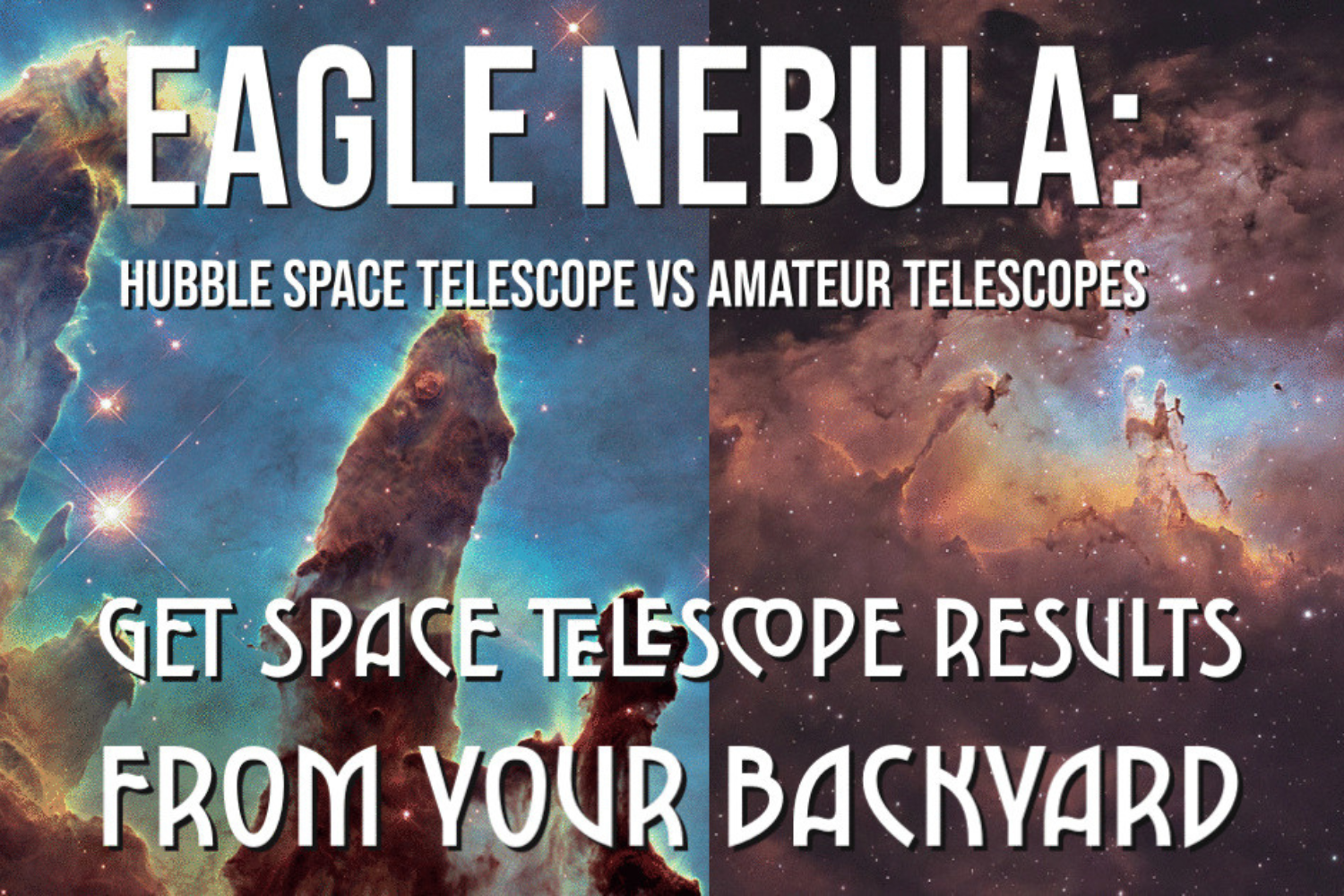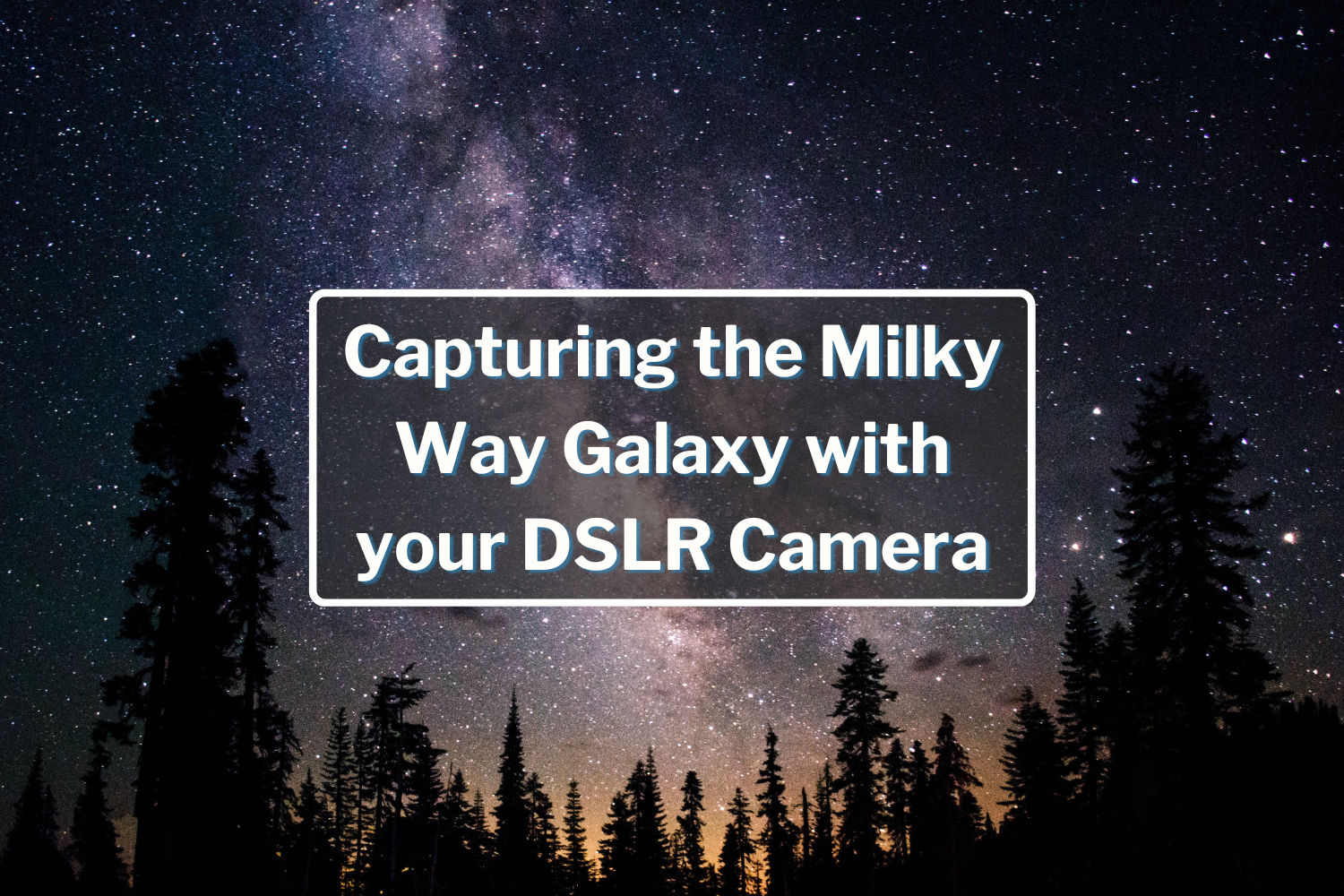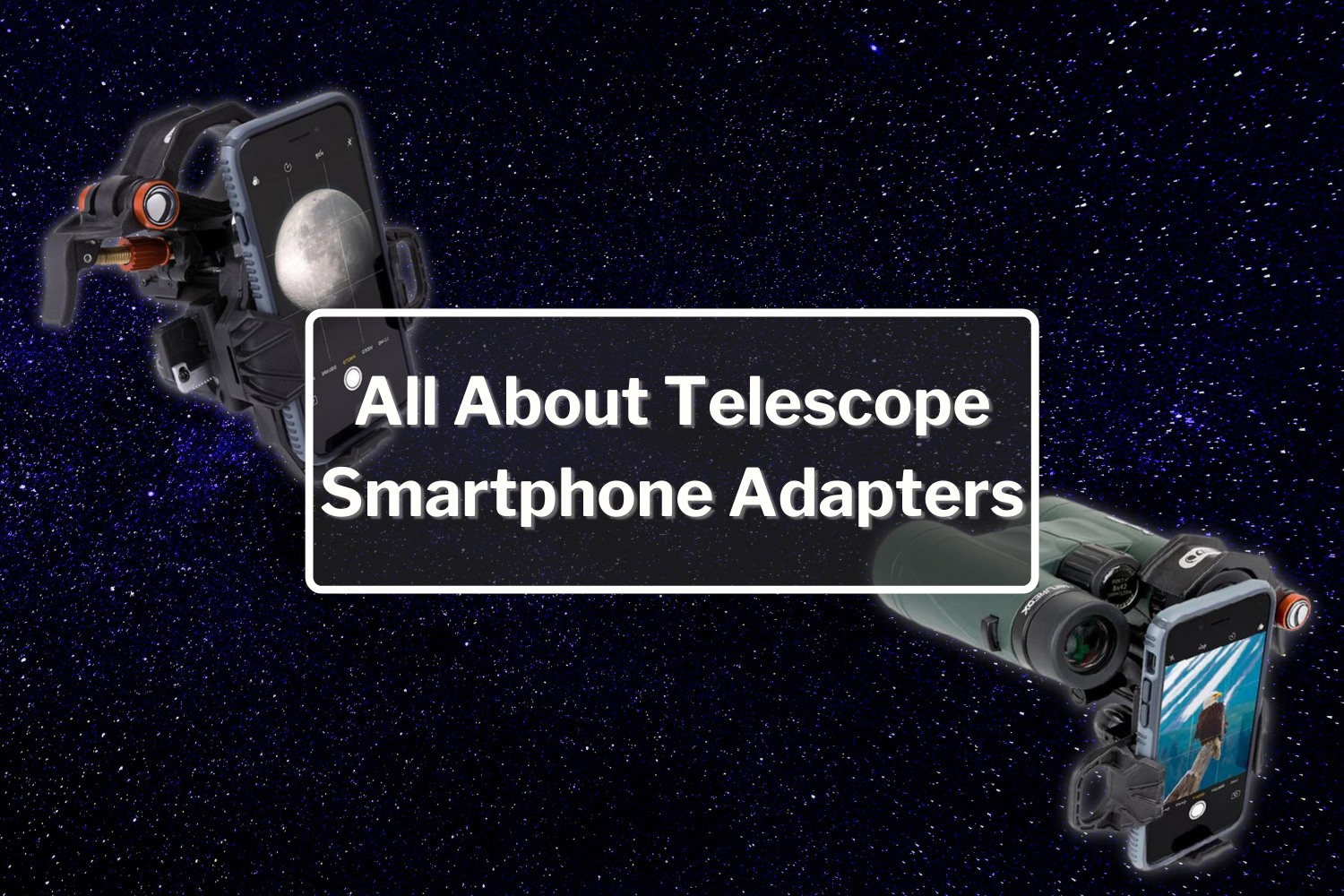What is the Best Light Pollution Filter For Astrophotography?
Light pollution is a very common issue to deal with when doing astrophotography, especially from home. Fortunately, there are light pollution filters that can help you cut through the glow of city lights and capture the cosmos. But with so many light pollution filters out there, it can be difficult to decide which one is best for your astrophotography rig and needs. In this blog post, we'll go over the various types of filters, which targets to use them on, and some common filter specifications to look out for to help you decide which one to buy.

The Optolong L-Pro filter is excellent at cutting through light pollution. Image courtesy of AstroBackyard.
How Light Pollution Filters Work
To understand which light pollution filter you need, it's important to first understand how light pollution filters work, and when to use them. Many beginning astrophotographers might be surprised to learn that any type of filter placed in front of your camera, whether it be clear glass or an ultra narrow bandpass filter, is only going to subtract or block some percentage of incoming light, whether that be 1% or 99%. Filters can never addincoming light to your image. What filters can do, however, is block unwanted light like light pollution or isolate a specific target. As a result, it can allow the desired light source — like a galaxy or nebula — to stand out much clearer from the background.
Chances are, if you're reading this, you're using a color camera for deep sky astrophotography — either a stock DSLR/Mirrorless camera, modified DSLR/Mirrorless camera, or a dedicated astronomy camera, also known as a one shot color (OSC) camera. Depending on which camera you use, you can expect different results when using light pollution filters and should buy one accordingly.
Types of Light Pollution Filters
There are two main types of light pollution filters designed for color cameras: multi-broadband filters, and multi-narrowband filters. Here's a chart explaining the difference:
| Type | Ideal Targets | Best Paired With |
| Multi-Broadband |
Galaxies |
Any color camera, including stock DSLRs |
| Multi-Narrowband | Emission Nebulae Planetary Nebulae Supernova Remnants |
Modified DSLRs & Dedicated Astronomy Cameras |
Multi-Broadband Filters
Multi-broadband filters allow a large percentage of the spectrum to pass through, while simultaneously blocking common sources of light pollution like streetlights. Multi-broadband filters are best used on astronomy targets that emit light over a broad part of the spectrum, namely galaxies, but also including star clusters, reflection nebulae, and dark nebulae. Multi-broadband filters work great on any type of color camera, even stock DSLRs! The downside to these filters is that light pollution often emits light in the same parts of the spectrum that galaxies and other targets emit in. So, even though multi-broadband filters generally work well, you will sometimes still experience some effect of light pollution like an orange glow or unwanted gradients in your image. This is especially true when imaging from a heavily light polluted area like a city. Since they're designed for broadband targets, they won't work as well as a multi-narrowband filter for targets like emission nebulae. Despite this, a multi-broadband filter like the Optolong L-Pro is an excellent choice for imaging galaxies and other broadband targets even from heavy light pollution.
Multi-Narrowband Filters
The other type of light pollution filters are what are known as multi-narrowband. You might also see these labeled multi-band, or multi-bandpass filters. Multi-narrowband filters are in many ways the opposite of multi-broadband filters. Multi-narrowband filters block out most of the spectrum of light, but selectively allow the main emission bands found in nebulae to pass through. Emission nebulae, some of the most commonly photographed objects in the night sky, are often comprised of only a few different gases — primarily Hydrogen Alpha, followed by Oxygen III, Sulfur II, and finally Hydrogen Beta. Each gas emits a very specific color of light, known as an emission line. Multi-narrowband filters allow the light from these specific emission lines to pass through while blocking the remainder of the spectrum. Because of this, they are extremely effective at letting you photograph emission nebulae, planetary nebulae, and supernova remnants from heavy light pollution! The limiting factor is that they are best paired with a modified DSLR/Mirrorless camera or a dedicated astronomy camera, and they usually aren't a good match for galaxies or other broadband targets. The Optolong L-eNhance & Optolong L-eXtreme are two very popular multi-narrowband light pollution filters. If you're looking for the best possible light pollution filter, however, read on!
Radian Triad & Triad Ultra Filters
The Radian Triad & Triad Ultra filters are premium multi-narrowband light pollution filters capable of blocking out heavy city light pollution, as well as even the biggest light polluter in the night sky: the moon. Where similar filters like the Optolong L-eXtreme allow two emission bands to pass through, the Triad & Triad Ultra allow three and four emission bands through respectively. This means you can capture all four major emission lines — Hydrogen Alpha, Hydrogen Beta, Sulfur II, and Oxygen III — all at once with a single filter on a color camera! Before the Triad Ultra existed, you would need at least two or three filters to achieve this feat. This means that regardless of the gases a nebula is comprised of, the Triad Ultra can capture any emission nebula, planetary nebula, or supernova remnant with high transmission and contrast.
Not only do the Triad and Triad Ultra let three and four emission lines through, but they also do an excellent job at blocking out light pollution while doing so. An important specification to look out for in multi-narrowband light pollution filters is Full Width Half Maximum, or FWHM for short. The lower the number FWHM of a multi-narrowband filter, the better it is at isolating just that specific emission line and blocking out light pollution. The lower the FWHM, the smaller stars appear in your final image. Smaller stars help immensely in allowing your subject, the nebula, to "pop" from the background, which in turn adds contrast to your image.
The Radian Triad Ultra has extremely narrow 4nm FWHM on Hydrogen Alpha, Sulfur II, and Oxygen III, and 5nm FWHM on Hydrogen Beta. For comparison, the Optolong L-eXtreme has 7nm FWHM for both Hydrogen Alpha and Oxygen III, and the L-eNhance is 10nm for Hydrogen Alpha and 24nm for Oxygen III. A narrow FWHM requires longer exposure times, so we only recommend filters like the Triad Ultra for those who have a quality equatorial mount and have the ability to do exposures of a few minutes or longer. However, the Triad Ultra is unmatched in terms of what it can capture. Below, you can find a direct comparison of the Optolong L-Pro, L-eNhance, L-eXtreme, and the Radian Triad Ultra, and we think the results speak for themselves. Take special note of the star size changing to allow the nebula to "pop" more, and how much faint nebulosity can be seen with each filter:

Narrowband Imaging on Monochrome Cameras
It wouldn't be fair to talk about light pollution filters without at least mentioning narrowband filters for monochrome imaging. While all of the filters we've covered so far will do a great job at blocking out light pollution on color cameras, the ultimate light pollution blocking filters are narrowband filters designed for monochrome cameras. These filters are just one single bandpass each — meaning that it only lets in one emission line, like Hydrogen Alpha, at a time. You then use a filter wheel to change filters until you capture enough channels for a full color image.
We mentioned FWHM above, and it's even more important for narrowband filters. Even the Triad Ultra, the best multi-narrowband filter currently on the market, tops out at a FWHM of 4nm. Narrowband filters can go down to 3nm for all three main emission lines, which does such a great job at blocking light pollution that you can take astrophotography images from downtown in major cities, or even during a full moon. The cost for narrowband filters adds up quickly, however, as you need separate Hydrogen Alpha, Sulfur II, and Oxygen III filters to create a full color image. There are wider FWHM filters than 3nm, such as 5nm and 7nm, which can help you save some money. These 5nm and 7nm narrowband filters are especially ideal for those who have access to dark skies, as you don't need such a narrow bandpass to block out light pollution.
You can even use multi-narrowband light pollution filters on monochrome cameras. Many monochrome imagers use luminance filters (the "L" in LRGB) to capture as much brightness as they can on faint objects. The problem with luminance filters, though, is that they don't block out any light pollution. Using a multi-narrowband filter like the Triad Ultra as a luminance filter will still allow you to capture data on emission nebulae with the added benefit of blocking light pollution!
Which Size Filter Do I Need?
Light pollution filters come in a wide variety of sizes, but some of the most common are: 2", 1.25", and clip-in style. The 2" and 1.25" filter sizes are threaded to screw or slot into most telescope imaging trains. If you're just using a DSLR and a camera lens, you may not have anywhere to thread a filter into except the front of your lens. But you then need to buy an oversized filter to fit your lens, and it can only work on that one lens, meaning you might have to buy multiple filters for different lenses. Alternatively, you can avoid this altogether by buying a clip-in filter, which clips in to your camera just in front of the sensor, making it compatible with any lens. Some DSLRs and Mirrorless cameras have trouble accommodating clip-in filters, so it's best to check first if yours is compatible by going to the filter manufacturer's website. Otherwise, if you're using a telescope, we usually recommend buying a 2" filter because they can provide full coverage for cameras as large as full frame. 2" filters are also threaded with M48 threads, meaning they can thread into a wide variety of telescope accessories like field flatteners, focal reducers, and more.
Which Light Pollution Filter is Best For My Telescope?
It depends on your level of light pollution, which camera you're using, which telescope you're using, what you want to image, and of course, your budget. If you live under heavy light pollution and are just starting out with a stock DSLR, consider a multi-broadband filter. If you've already got a modified DSLR or, even better, a dedicated astronomy camera, a multi-narrowband filter is often the way to go. For monochrome cameras, you'll want to use narrowband filters to cut through heavy light pollution. If you are lucky enough to have dark skies, then why are you reading this article?! We're just kidding, of course. Many astrophotographers don't realize that light pollution filters do much more than just block light pollution. Using any kind of narrowband filter, including multi-narrowband, can reduce star bloat and greatly enhance the overall contrast of nebulae in your images — even under dark skies.
We want to make a note that while all of the filters we've mentioned in this article will work great with most telescopes, some ultra-fast telescopes like the Celestron RASA or an SCT with Hyperstar will not pair well with all light pollution filters due to something called preshift. A filter like the IDAS NBZ, which is designed to work at up to f/2, may be a better choice for you. If you have one of these telescopes, please contact our Sales Team and we will happily help you get the best filter for your telescope.
It also depends on what you wish to image. If you primarily only like to photograph galaxies or other broadband targets, a multi-narrowband filter is likely not going to give ideal results. A multi-broadband filter like the Optolong L-Pro would be better, and is best for those who have a stock DSLR. If you prefer photographing targets like emission and planetary nebulae, a low FWHM multi-narrowband filter like the Radian Triad Ultra (Quad-band) can work wonders even from heavy light pollution.
Last but not least, the right filter for you will depend on your budget. As much as we love the Triad Ultra and think it's an amazing choice for nearly any application, we realize that the price isn't for everyone. For that reason, filters like the Radian Triad (Tri-band), Optolong L-eXtreme, and Optolong L-eNhance make a great alternative for those on a more limited budget. We've made a handy chart comparing our best-selling light pollution filters to help you decide:
| Filter | Type | Best Used On | FWHM |
| Radian Triad Ultra | Multi-Narrowband |
Emission Nebulae |
Ha: 4nm SII: 4nm OIII: 4nm Hb: 5nm |
| Optolong L-eXtreme | Multi-Narrowband | Emission Nebulae Planetary Nebulae Supernova Remnants |
Ha: 7nm OIII: 7nm |
| Optolong L-eNhance | Multi-Narrowband | Emission Nebulae Planetary Nebulae Supernova Remnants |
Ha: 10nm OIII: 24nm Hb: 24nm |
| Optolong L-Pro | Multi-Broadband |
Galaxies |
— |
| Radian Triad | Multi-Narrowband | Emission Nebulae Planetary Nebulae Supernova Remnants |
Ha: 3nm OIII: 18nm Hb: 18nm |
| ZWO Duo Band | Multi-Narrowband | Emission Nebulae Planetary Nebulae Supernova Remnants |
Ha: 15nm OIII: 35nm Hb: 35nm |
| Astronomik CLS | Multi-Broadband | Galaxies Star Clusters Reflection Nebulae Dark Nebulae |
— |
| Baader Moon & Skyglow | Multi-Broadband | Galaxies Star Clusters Reflection Nebulae Dark Nebulae |
— |
| STC Duo Narrowband | Multi-Narrowband | Emission Nebulae Planetary Nebulae Supernova Remnants |
Ha: 10nm OIII: 10nm |
| IDAS LPS | Multi-Broadband | Galaxies Star Clusters Reflection Nebulae Dark Nebulae |
— |
| IDAS NB1 | Multi-Narrowband | Emission Nebulae Planetary Nebulae Supernova Remnants |
Ha: 20nm OIII: 32nm Hb: 32nm |
| IDAS NBZ | Multi-Narrowband | Emission Nebulae Planetary Nebulae Supernova Remnants |
Ha: 10nm OIII: 10nm |
We hope you found this guide to light pollution filters helpful! Still need help deciding? Contact our friendly Sales team who are ready to help you get the find light pollution filter for your needs. If you have any questions, you can always leave a comment below and we'll do our best to answer you quickly. Clear skies!
Written and published by Brian Fulda
10 Responses
Jacob Lewis
Hi,
Are you still in business?
I found a few errors on your site.
Would you like me to send over a screenshot of those errors?
Regards
Jacob
(647) 503 0317
OPTeam
Hi Steve,
Though light pollution filters are less effective for visual astronomy, you can use contrast filters to enhance your view visually. You can shop our selection of contrast filters here: https://optcorp.com/collections/contrast-filters
We especially like Astronomik’s UHC Visual Filter and the Baader UHC-S Nebula filters for visual observing from light pollution. Hope this helps!
- OPTeam
OPTeam
Hi Rick,
We’d be happy to help you find the best light pollution filter for what your needs are. Get in touch with our helpful team at internetsales@optcorp.com
- OPTeam
OPTeam
Hi Kevin,
Thank you, we really appreciate that! We’re glad you enjoyed it. If you have any questions, feel free to reach out to us at internetsales@optcorp.com
- OPTeam
OPTeam
Hi Michael,
Great question, and apologies for the delayed response! We recommend the Optolong L-Pro for EOS-R cameras. It’s a clip in filter, and is great for capturing broadband targets like galaxies and star clusters from light pollution: https://optcorp.com/products/optolong-l-pro-eos-r-clip-filter
- OPTeam
Steve Allison
I’m pretty much a visual “astronomer”. What can I expect a light pollution filter to do for my visual images? Any recommendations?
Thanks
Rick Griggs
I have a meade etx125 5"with tracking. I have been relegated to viewing the moon and a couple of planets due to light pollution and my ability. I live in Central California in a city that is plagued with neighbors and street light.
The scope uses 1.25" eyepieces that will accept a filter. I also have a Canon rebel 5.o but I must confess, I am less experienced with photography than using my telescope and I am beginner with my scope
Would like all help offered and filter type pls
Kevin Lemoi
This is one of the MOST helpful resources I have found for filter selections. It gives me a good starting guide upon which to buy/apply filters for AP. Thank you!
Michaél Chang
Which light pollution filter do you recommend on a Canon EOS R6 full-frame camera?














Jacob Lewis
August 31, 2022
Hi,
Are you still in business?
I found a few errors on your site.
Would you like me to send over a screenshot of those errors?
Regards
Jacob
(647) 503 0317